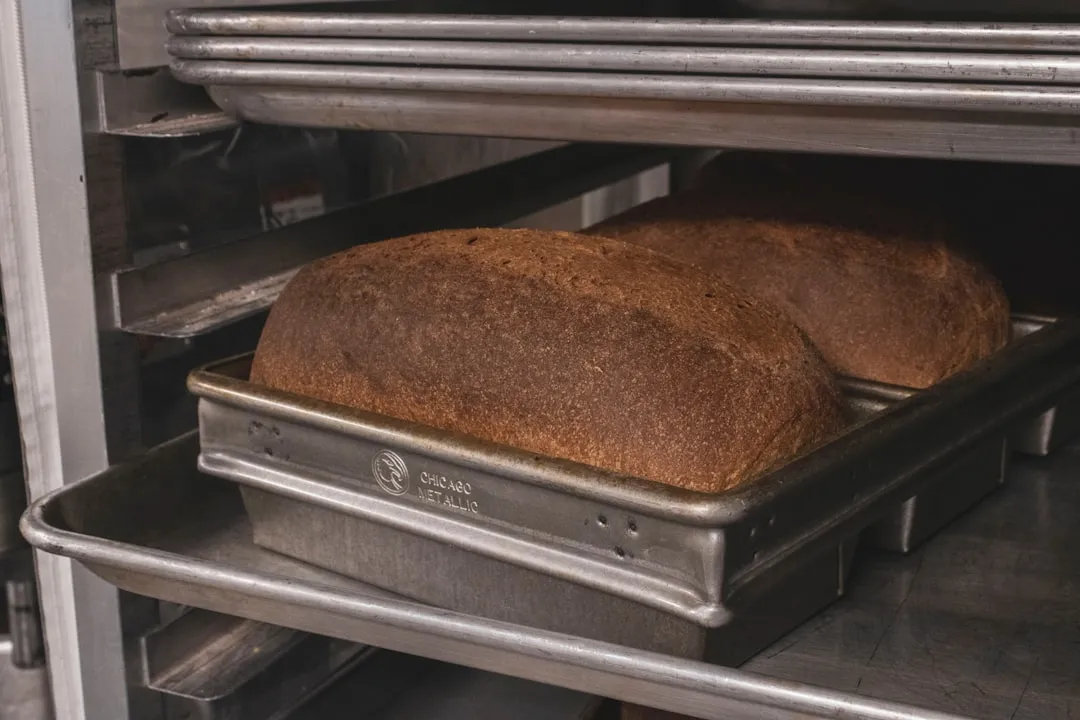The first written account of "stock" as a culinary staple goes back to 1653, when La Varenne's Cookery described boiling mushroom stems and table scraps with other ingredients (such as herbs and basic vegetables) in water to use for sauces. But really, the concept of stock has probably been around for as long as people have been using water to boil food.
Before we jump into the specifics of stock and why you should be making it at home, let's get into the semantics: stock and broth, while often used interchangeably, are intrinsically different. Stock is the liquid gold that is created after boiling bones, whereas broth is the liquid from boiled meat. While broth is indeed delicious, its complexity and depth of flavor are nowhere near a stock.
Stock is an ingredient we often take for granted, but the simple act of infusing water with a few essential flavors to enhance entire dishes is really quite amazing—and it's something you can easily do in your own kitchen!
The Benefits of Making Stock at Home
1. It's Cheaper
Using leftover bones when cooking at home is obviously the cheapest way to make stock, but it's important to remember that buying bones at the supermarket is very budget-friendly as well.
Butchers sell chicken backs and necks for ridiculously low prices—in my case, I found them selling for as low as $1.50 USD/lb. In comparison, prepared cuts of poultry, such as thighs or breasts, can sell upwards of $3.00 USD/lb.
You may not see bones for sale in the poultry aisle, but they'll definitely have available bones for you to buy if you ask the butcher directly.

Now, let's do a price comparison of store-bought stock versus homemade stock. A 6-cup container of good stock costs $4.00 USD, whereas 6 cups of homemade stock only needs 1 lb. of bones at $1.50 USD/lb. That extra $2.50 USD is a substantial amount of savings, and can be put towards other worthwhile expenses... such as student loans (ouch).
Note that this budget calculation does not include the vegetables, herbs, and spices used in the recipe for chicken stock below. However, since these ingredients are so common, they usually don't require separate purchase.
In fact, stock is a fantastic recipe that utilizes kitchen scraps and creates amazing flavor with them instead. Technically, you can spend no money whatsoever on stock, as long as you have a few standard vegetables and chicken bones lying around. And nothing is more budget-friendly than free food! Plus, it's an excellent way to use up veggies almost past their prime.
2. It's Far More Flavorful
Having control over the herbs, flavorings, and wonderful bottom-of-the-pan bits (more on this later) makes for a much heartier and delicious stock. The best part about making it at home—other than the extra change in your wallet—is customizing your stock to your personal taste preferences.
Perhaps you prefer your dishes to be on the spicier side; throw in a few peppercorns. Or maybe you like stocks with an earthier feel... so load up on the bay leaves. Get creative with your flavor combinations and find the perfect mix of seasonings for your tastes.
The Basic Ingredients
Like I said earlier, you have complete control over what flavorings you use to create your ideal stock. The following recipe is my personal favorite; feel free to start with these ingredients and eventually experiment by adding your own.
This recipe will yield about 6 cups of chicken stock.
- 1 lb. chicken necks and backs (or leftover bones)
- 1 large onion, roughly chopped
- 2 carrots, roughly chopped
- 2 celery stalks, roughly chopped
- 2 garlic cloves
- ½ cup wine
- 7 cups water
- 1 Tbsp. salt
- about 10 whole peppercorns
- 2 whole bay leaves
- several sprigs of fresh thyme (or sub with 1 tsp. dried thyme)
- several sprigs of fresh parsley (or sub with 1 tsp. dried parsley)
- vegetable oil
A few notes about the ingredients above:
Aromatics (in this case, the vegetables on the ingredients list) are important because they both give heartiness and impart more subtle flavor to the stock—such as sweetness or body. They also release addictive aromas that make stock both smell and taste irresistible. Like I mentioned before, stock is a great way to use up veggies that are almost past their prime, which makes it even more cost effective!
As for the wine, alcohol is a simple but effective way to add complexity to any dish, be it savory or sweet. However, if you don't have wine on-hand or prefer to keep your stock alcohol-free, you can easily substitute the wine with water.
Lastly, the bay leaves, thyme, and parsley are the aromatics of a traditional bouquet garni. This particular combination is a French classic that is pretty accessible year round, but you can add any of your favorite herbs to enhance the stock.
The Method
- In large stock pot or Dutch oven, heat vegetable oil on high heat.
- Add the chicken bones and brown for 8-10 minutes, stirring occasionally. Don't worry about the brown bits at the bottom of the pan (called fond)—they're the most flavorful ingredient in your stock, and an essential part of making stock at home. Just make sure they don't turn from dark golden brown to black... otherwise, your stock will taste burnt.

- Add the onion, carrot, and celery—no need to peel—to the pot and turn the heat down to medium.
- Sweat the vegetables for about five minutes, then turn the heat back up to high and add the wine.
- As the wine boils, scrape up the fond from the bottom of the pan with a wooden spoon.
- When the wine has been reduced completely (there should be almost no liquid remaining), add 7 cups of water and the rest of the ingredients: peppercorns, salt, parsley, thyme, and bay leaves.
- Bring the stock to a boil, then reduce the heat to low and leave the pot uncovered to simmer for several hours—at least 3 hours and up to 6 to extract the maximum amount of flavor from the bones.

- Turn off the heat and strain the stock with a colander so that you're left with liquid alone and no particulates.
- Lastly, taste the stock to check for seasoning. If the stock still seems weak, simmer it for another hour to reduce it and intensify the flavor. This will make the yield smaller, but it's worth it—nothing beats a strong, well-flavored stock!

Alternative Methods?
America's Test Kitchen suggests an abbreviated version of this method for the more time-pressed chefs. However, I'm a bit skeptical of this abbreviated version of stock—in my opinion, twenty minutes is simply not enough time to make a stock strongly-flavored enough to hold its own in soups, risottos, and other hearty dishes.
ATK also suggests a slow cooker version for those looking to get a solid night's sleep while the stock cooks. This method definitely allows for complete and total flavor extraction but unfortunately omits the intense, savory flavor of fond. The chef either has to sacrifice this key element or dirty an additional pan on the stovetop for browning and deglazing, as the slow cooker can't provide enough heat for this crucial step.
In the end, while these alternative methods may be time-saving or less labor-intensive, I believe that neither will yield the amazing, savory flavor that the traditional chicken stock method creates.
Let's Talk About Storage
Homemade stock may be a bit of a drain on your time, but it can be frozen and used up to six months after it's cooked—thus making it convenient for folks that hate the thought of making stock frequently (but love the homemade flavor).
To save space in the freezer and make stock easier to use on an as-needed basis, just freeze your stock into ice cube trays: each standard 16-cube tray holds 2 cups of liquid. When you need the stock, just pop out however much stock you need in ice cubes and melt in a pot on the stove.
- Don't Miss: 10 Thrifty, Time-Saving Ice Cube Tray Food Hacks
Bring Home the Stock
Yes, buying stock or bouillon cubes at the store is easier—I can't debate that. But when it comes to saving money or savoring flavor, I can't think of any other way to enjoy stock other than using homemade. And I promise that once you make it, you'll get hooked on it: the amazing aroma that fills your kitchen, the depth of flavor it adds to anything from soups to sauce-based dishes, and the ease in which you can store it to use for later. So, what are you waiting for?
More Ingredient 101 Hacks:
- How to Select, Store, & Prep Fresh Herbs
- The Know-It-All Guide to Peppers
- How & Why You Should Always Brown Butter
- The Secret Powers of the Humble Radish
- Toasting Nuts Is a Necessary Evil & Here's Why
Photos by Laura Holman / Food Hacks (unless otherwise stated)




























Comments
Be the first, drop a comment!